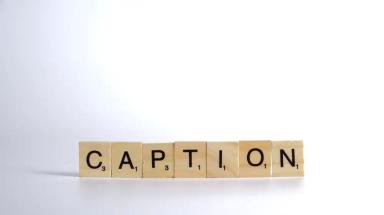Summary
Interview transcription is the process of conveying the audible content of an interview into a written one by including all that was said and presented during the interview. It can be done on a separate page and it has to include specific sections and information. There are specific guidelines to follow and it needs to be done by a professional linguist.
What is the meaning of transcription?
Transcription is the process of converting audible content to written content that people are able to read at the same time as listening or watching. It usually requires a professional who has previous experience in transcribing content since there are specific rules and guidelines to follow and some factors that should be taken into consideration.
Get our transcription services now
What are the types of files that can be transcribed?
Transcription can be used in all fields such as medical, legal, academic, psychology, engineering, technology, media, business, etc. As for the types of files that can be transcribed, one can transcribe all audiovisual files such as audio, voice recordings, documentaries, interviews, series, videos, movies, conversations, phone calls, podcasts, meetings, lectures, ads, etc.
Get our audio transcription services now
What is interview transcription?
Interview transcription is the written content of the interview that is completed between two or more people. Whether a podcast or an interview that can be watched, interviews can be transcribed by professionals who are able to offer high-quality outcomes.
For so many reasons, people can ask for interview transcription services such as reaching a wide range of audiences including the deaf and hard of hearing. Interview transcription can also help language learners in learning new words and terminologies.
Not to mention that it enhances the comprehension of the interview since some might find it hard to follow a long interview without it being supported by written content. Therefore, and due to its high importance nowadays, people are finding it more suitable to have interviews transcribed.
Get our video transcription services now
What does an interview transcript look like?
An interview transcript typically looks like a written document that includes all that was said during the interview. It must include all details. In the case of verbatim transcription, transcriptionists must not miss any information.
An interview transcript is usually a written document with the name of the interviewer, interviewee, time of the interview, location, date, and where it was held. Also, they usually include questions and answers. A typical interview transcript must include everything that was said during that interview and the change of speakers must be clear as well.
How long does it take to transcribe a 30-minute interview?
The time it takes to transcribe an interview is based on many factors such as the field of the interview, the pace of the transcriptionist, and the duration of the interview. Usually, it takes up to two hours to transcribe a 30-minute interview, if the transcriptionist is somewhat fast and experienced in the field of the interview.
It might take longer if the transcriptionist needs to look up words and homophones. Having a qualified transcriptionist handle tasks in his/her fields of expertise might even require much less time to complete interview transcription.
Get our translation and writing services now
How to transcribe a conversation?
To transcribe a conversation, you will need to follow some basic steps to be able to successfully complete this task.
- Download the conversation file. You must first start by downloading the conversation file. Once successfully downloaded, you can start with the next steps.
- Listen to the conversation. Before starting with the transcription process, it is highly advised to listen to the whole conversation several times to be able to identify the topic, the duration of the conversation, and the number of speakers.
- Transcribe. Then, you can start transcribing the conversation and include all details. You can refer to dictionaries and glossaries if you were unable to understand a word or in the case of homophones.
- Proofread. Directly after transcribing a conversation, you must proofread the transcription to be able to correct typos and mistakes related to grammar, spelling, and punctuation.
- Listen and read at the same time. This is the last step. You must listen to the conversation and read the written content at the same time to make sure that you haven’t missed any important detail.
Beyond Subtitles: Exploring the Various Types of Audiovisual Translation
When do you need for interview transcription?
Interview transcription is needed for so many reasons. First of all, interview transcription aims at targeting more audiences, including the deaf and hard of hearing who are unable to listen to what is said in an interview. This is one of the most important benefits of interview transcription services.
Also, interview transcription is needed if individuals want more options for storing, analyzing, and sharing data. In addition to that, interview transcription is needed if one wishes to rank on Google search; it makes interviews easy to reach and more people will be able to discover its content through organic search.
Also, it enhances the comprehension of what was said and can highlight important ideas and shared details such as numbers, addresses, and other related information. Furthermore, it makes it easier for people to identify specific parts of the interview that they need without having to watch the whole interview all over again.
From the Courtroom to the Page: Guidelines for Legal Transcription
Interview transcription guidelines
A good interview transcription is a transcription that is completed by a professional who follows the below guidelines:
- Accuracy: The transcription should be one hundred percent accurate. Everything that is said in the interview should be transcribed.
- Never paraphrase: Transcriptionists should never correct what was said, even if there were mistakes. Everything should be exactly the same as what was said in the interview. A professional transcriptionist knows that there is no room for rephrasing, paraphrasing, and change of structure.
- Never add information: No information should be added, not even an additional explanation. Never add, omit, or explain what was said during the interview.
- Respect verbatim transcription if it is needed: If you are required to use verbatim transcription, then your transcription must include everything. Verbatim transcription usually aims at including everything such as giggles, laughs, clearing throats, etc.
- Write correctly: You must avoid mistakes related to grammar, spelling, or punctuation. Always work in the language you know how to properly write in.
- Always proofread: The most important step of transcription is proofreading. You must always read the written content after finishing.
- Use speaker labels: This is required to be able to identify speakers.
- Conduct research when needed: If you are having doubts and you are not sure about the spelling of a word, you have to conduct research. Never write down what you think might be wrong.
The Difference Between Subtitles and Dubbing
Interview transcription format
A typical interview transcription format looks like the following:
- Name of the interviewer
- Name of the interviewee
- Time of the interview
- Date of the interview
- Location of the interview
- Questions of the interview
- Answers of the interviewee
On a side note, interview transcription has to include everything that was said in an interview. Each and every word of the interview must be transcribed.
How to become a certified medical transcriptionist
Voice-to-text interview transcription
Transcribing recorded interviews has to be done by a professional and experienced transcriptionist who knows all about the format, style, and how to write without committing linguistic mistakes. Voice-to-text interview transcription has many benefits and is indeed becoming required and needed more than ever.
The transcribed interview must always include all information and details. To transcribe audio interviews to text, one must keep in mind the guidelines to follow such as accuracy and error-free outcome.
Medical Transcription: What Is It and Why Is It Important?
What makes a good interview transcriptionist?
A good interview transcriptionist must have the most basic qualifications. First things first, interview transcriptionists must be linguists who know how to correctly write in the desired language. It is very important to have a one hundred percent error-free transcription that doesn’t include mistakes related to grammar, spelling, and punctuation. Also, professional interview transcriptionists must only work in their fields of expertise.
Obviously, anyone might be able to transcribe an interview, however, having this task done by an experienced interview transcriptionist lowers the chances of mistakes. Since the experienced transcriptionists have knowledge of the specialized field of the interview, it will not only guarantee high-end results, but it will also take them much less time since they know the correct spelling of words.
Not to mention that interview transcriptionists must be fast and should be able to work under pressure. Sticking to deadlines is fundamental. Also, being responsive and having good communication skills go a long way when it comes to dealing with clients.
Get our subtitling and captions translation now
How much does interview transcription cost?
There is no specific price when it comes to interview transcription. The price of interview transcription depends on many factors such as the length of the interview, the field, and the deadline. Also, some transcriptionists set the prices for their interview transcription services based on the duration of the interview, while others prefer to get paid on the number of hours it took them to be transcribed.
Obviously, interviews with specific and complex fields are pricier than general interviews. The reason is that it makes more time and effort. For example, an interview that tackles topics that are related to the legal and medical fields is more likely to cost more than other fields.
Get a quote now and let our translators bridge the gap between languages!
How to prepare for interview transcription?
The preparation phase before starting with the interview transcription process is considered to be the most important phase. At first, transcriptionists must choose a quiet place to be able to clearly listen to what is being said and to avoid distractions. Then, it is advised to have dictionaries and glossaries that will help transcriptionists identify unclear words. After that, noise-canceling headphones can be used for the spoken content to be comprehensive.
After having everything set, transcriptionists can download the file of the interview and start by watching the interview or listening to it several times before the transcription process starts. This helps identify speakers, the theme and the tackled topics, and the duration of the interview. Once the abovementioned steps are successfully done, transcriptionists become ready to start transcribing the interview.
Get our technical translation services now
How will Leaders help you with interview transcription?
From short interview transcripts to long interviews, Leaders can help clients with their interview transcription needs. First, at Leaders, transcriptionists are able to work on transcription projects in all fields. Projects are handled by professionals who have similar experience in the field of the interview. Moreover, transcriptionists at Leaders are basically linguists who only work in their native language, which guarantees high-quality outcomes.
Not to mention that transcriptionists at Leaders are fast, responsive, and always stick to deadlines. They are known for their excellent communication skills. Furthermore, Leaders can take care of all interview transcription projects no matter the language, no matter the field, and no matter the type of file.
Whether clients need transcription of interviews that tackle topics related to law, medicine, psychology, engineering, universities, entertainment, gaming, news, politics, economy, or anything else, Leaders is always ready to help clients by making their lives much easier.
Upload your file now and watch it seamlessly transform into any language of your choice!






